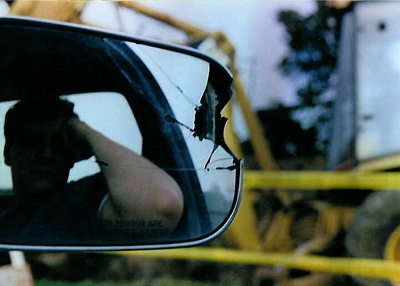All Nonfiction
- Bullying
- Books
- Academic
- Author Interviews
- Celebrity interviews
- College Articles
- College Essays
- Educator of the Year
- Heroes
- Interviews
- Memoir
- Personal Experience
- Sports
- Travel & Culture
All Opinions
- Bullying
- Current Events / Politics
- Discrimination
- Drugs / Alcohol / Smoking
- Entertainment / Celebrities
- Environment
- Love / Relationships
- Movies / Music / TV
- Pop Culture / Trends
- School / College
- Social Issues / Civics
- Spirituality / Religion
- Sports / Hobbies
All Hot Topics
- Bullying
- Community Service
- Environment
- Health
- Letters to the Editor
- Pride & Prejudice
- What Matters
- Back
Summer Guide
- Program Links
- Program Reviews
- Back
College Guide
- College Links
- College Reviews
- College Essays
- College Articles
- Back
No Safe Tan MAG
Every day many pale people get tanthanks to the ever-growing industry of tanning salons. These salons have poppedup anywhere there is room for a curtain and a bed. People don't have time to geta tan the natural way, so they resort to salons to make them look and feel betterabout themselves. Tanning is not risk-free, however, and can cause skin cancer,eye injury and premature aging as well as other negative side effects. Bluntlyput, there is no such thing as a safe tan.
Sunlight has two types ofskin-damaging ultra-violet rays, UVA and UVB. UVA rays have longer wavelengthsand can damage the skin's connective tissue, which can lead to premature agingand cause skin cancer. UVA rays also increase the risk of cataracts and retinaldamage, and are the type used in tanning salons (uhs.berkeley.edu). People tendto think salon tans are safe, but UVA rays may be as much as 20 times strongerthan natural sunlight (www.skin-care-guide.com).
UVB rays, considered theburning rays, are shorter and are primarily responsible for sunburn and skincancer. Salons actually expose skin to a tanning unit which is 10 times greaterthan natural light, and the beds are able to irradiate almost your entire body(Case, 130).
Tanning beds have been found to increase your chances ofgetting dangerous cancers by about seven times (Murphy). One major problem ofoverexposure from tanning salons is a type of skin cancer called malignantmelanoma. This refers to a group of cancerous tumors, known as melanocyte, whichare the cells in your skin that produce melanin. A normal melacotycal will slowlyconvert substance to melanin through a series of chemical steps.
Melanoma is the number one cancer affecting women ages 24-29 and accounts for 75percent of all skin cancer deaths. It can occur anywhere on the body and ischaracterized by asymmetrical moles with irregular borders. Exposure to externalinfluences such as sunlight, heat, heavy metals and ionizing radiation can changenormal cells into cancerous cells, which often spread to other parts of the body.Melanoma can be treated surgically, and in some cases through chemotherapy,radiation or immunotherapy.
To prevent sun damage, you should always wearsunscreen with at least 15 SPF, try to stay out of the sun between 11 a.m. and 2p.m., and stay away from tanning salons.
People may find it hard tobelieve that a tanning lamp can be so much stronger than natural light, but 20minutes in a salon is like spending the day at the beach. Another misconceptionabout salons is that because there is no harsh glare, people don't need to wearthe goggles or sunglasses. Just because you are not outside and cannot actuallyfeel the burning does not mean the rays will not get to your eyes. Not wearingprotective gear can burn the cornea; repeated exposure can result in blindnessand cataracts. Another myth about tanning salons is that you can get a good"base tan" to protect your skin from the real sun. There is no suchthing as a base tan, and studies show that the average tanning salon providespatrons with protection of SPF 4, not the recommended minimum 15.
Despitethe known dangers of tanning salons, they remain popular, especially in collegetowns. Salons target young people, especially women, who feel they need to have atan to look attractive. In trying to achieve beauty, though, people are doingmore harm to themselves than it may be worth later in life.
Workscited:
*Melanoma is the fastest growing cancer today, because of America'sdesire for dark skin and ignorance of the sun's power. The number of peopleaffected by melanoma is increasing by about 7% a year.
*Skin makes up 72%of the body therefore Melanoma affects the largest organ in the body.
*People with unusual moles (dysplastic nevi) have a 50% greater chance ofdeveloping melanoma by age 60.
*Melanoma is the number one canceraffecting women ages 24-29 and it is second in the age group of 34-39 only tobreast cancer.
*One in 75 Americans born in the year 2000 will developmelanoma.
*Men often get melanoma on the torso of the body or the headand neck while women often get it on their arms and legs.
*Caucasians are10 times more likely to develop melanoma than African Americans or other darkskinned races.
*Melanoma affects 1 in 26 males and 1 in 36 females.
*10% of people diagnosed with melanoma have immediate family members withmelanoma also.
From here

Similar Articles
JOIN THE DISCUSSION
This article has 1 comment.

0 articles 0 photos 12292 comments